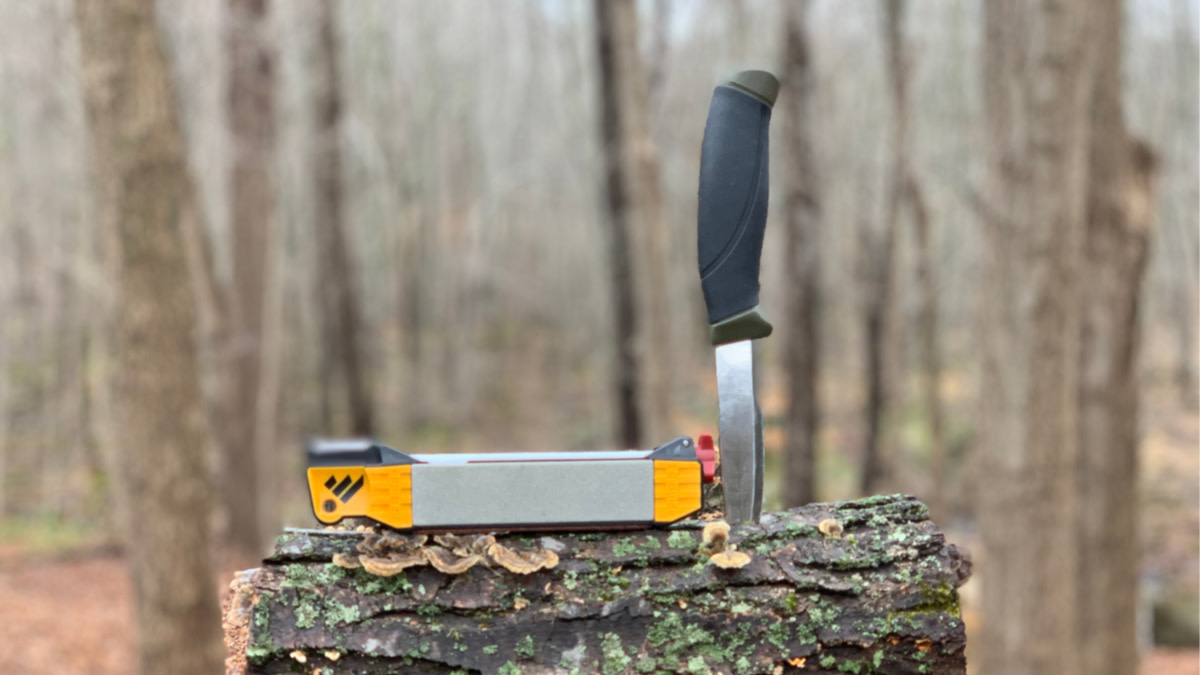
For a lot of folks, sharpening a hunting knife is a project for the work bench when they’re stuck inside dreaming about being outside. But the best way to sharpen a knife to an edge that you can shave with is out in the field, when you actually need it.
The reason is simple: The more a blade dulls, the harder it is to resharpen to a fine edge. The way a knife dulls is the thin metal on the cutting edge bends and rolls. Keep using the knife as it dulls, and small bits of metal actually begin to break off and chip away. The more this happens, the more work it will require to get the blade back to a keen edge. Besides, breaking down an deer or doing camp chores with a knife that’s getting dull sucks. The good news is that it’s really easy to sharpen knives in the field.
All it requires is just taking just a minute or two and some very simple skills using any number of the in-field sharpeners available. I use two types.
The first is a very small handheld device that uses carbide and ceramic notches to sharpen and hone the blade. Their strength is their small size and simplicity. You can stash it in a pack or pocket, and then simply pull the blade through each notch a few times to touch up the edge.
However, a proper sharpening stone is more versatile and is a much better tool for putting a precise, sharp edge on your blade. You don’t need to tote a heavy, old-fashioned stone out into the field; there are a number of tools available that incorporate diamond coated steel plates and ceramic rods in a small, light package.
My favorite is the Work Sharp Field Sharpener 2.2.1. Using it is easy. Give the blade 5 to 10 strokes on the sharpening plate, alternating strokes each time. A built-in 20-degree sharpening guide will keep your blade at the proper angle, which is very important and what a lot of folks struggle with when sharpening on a stone. If your knife is very dull, start with the coarse plate before moving on to the fine plate. If your knife just needs some touch up, you can skip the coarse stone and go right to the fine.
At this point, you’ve been “grinding” the edge, which leaves a minuscule small thin wire bur on the blade. You remove this and finish the sharpening process by honing. On the Work Sharp Field Sharpener there are two tools for the job. First you give the blade 5 strokes per side on a ceramic rod. Finally, you strop the blade on the built-in leather strop, just like an old-timey barber working on his straight razor. The whole process takes less than five minutes, and when it’s done, I have a blade that will easily slice through whatever is in front of me.






